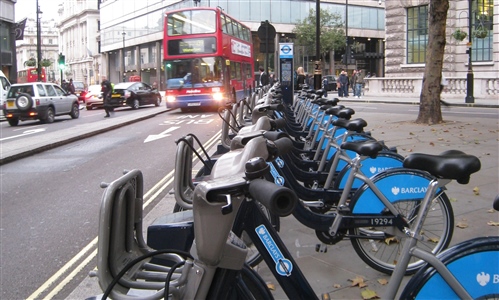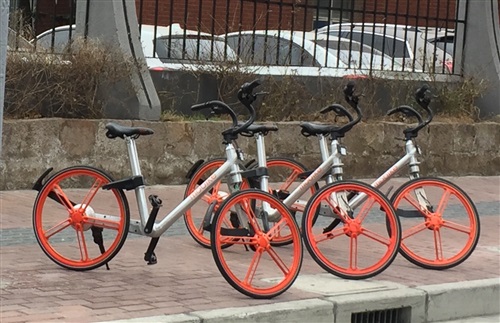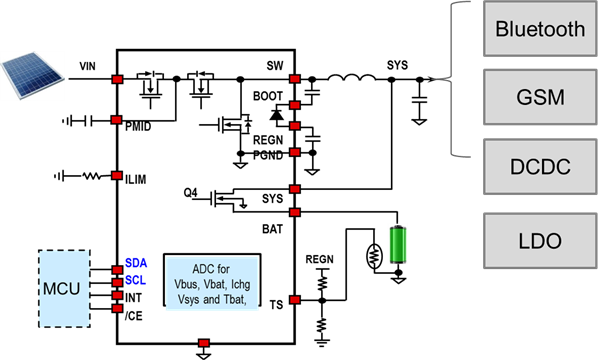SSZTA31 June 2017 BQ25895
In large cities, the concept of “shared bikes” started several years ago. Anyone can rent a bike and return it to various docking stations throughout the city with a credit card. The rider is charged for the length of time that they’ve rented the bike.
For example, in London, a shared bike user picks up and returns the bike to a fixed location, a docking-station kiosk like the one shown in Figure 1. This is fine for those who want to take a roundtrip bike tour around a city for fun, but not a good solution for the daily urban commuter when there is no docking station nearby. Commuters face the issue of walking long distances or hiring a taxi for a relatively short distance – how do you travel the “last mile” from a subway or bus stop to a workplace without renting a bike for the whole day? If commuters could pick up and drop off bikes anywhere, it would be a lot more convenient and efficient.
 Figure 1 Shared Bike with Docking
Station in London
Figure 1 Shared Bike with Docking
Station in LondonToday, bike-sharing programs across major cities in China for example, have evolved from kiosk-based systems into something dockless. Anyone can locate and rent a bike through an application on their smartphone for a fun ride to an event, for example, or getting from office or home to a public transit station. When you are finished, the electronic lock and 3G/4G wireless network allows you to leave the bike pretty much anywhere. This has solved the last-mile issue for urban commuters.
 Figure 2 Free Standing Shared Bikes in
Shanghai
Figure 2 Free Standing Shared Bikes in
ShanghaiHow does it work? Without a docking station, a shared bike needs a way to be tracked on a network, open the lock and send user data for processing. With a battery-powered electronic lock, Bluetooth®, GPS and 3G/4G systems, these freestanding bikes are parked securely around the city with an electronic lock, eliminating the docking station. Users find a bike using a map in the phone application and then scan the QR code on the bike to unlock the bike. When they have arrived at their destination, they use the phone application again to engage the electronic bike lock.
Since the bike’s electronic lock is a battery-powered application, the challenge is to keep the battery constantly charged. Without docking stations, designers of these types of shared bikes need an easy way to charge the battery autonomously. One solution is to place solar panels on the bike, although that is of course dependent on sunlight and can affect energy production when the sun is not at an optimal angle. A maximum power point tracker (MPPT) calculation optimizes the charging current between the solar array and the bike’s battery charger. See Figure 3
 Figure 3 Example of a Flexible Charging
Solution
Figure 3 Example of a Flexible Charging
SolutionThe BQ25895 has an inter-integrated circuit (I2C) setting and integrated analog-to-digital converter (ADC) to measure the open-circuit input voltage and charging current, enabling you to easily find the MPPT point with a simple calculation. The BQ25895 can help not only charge the battery but also fully harness the solar panels of shared bikes to keep them powered when commuters need them most. Get more information on how the BQ25895 can help power your next application with the sun.